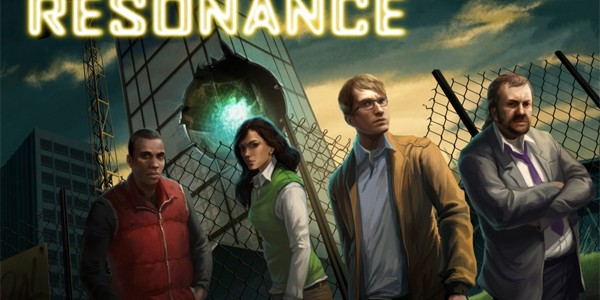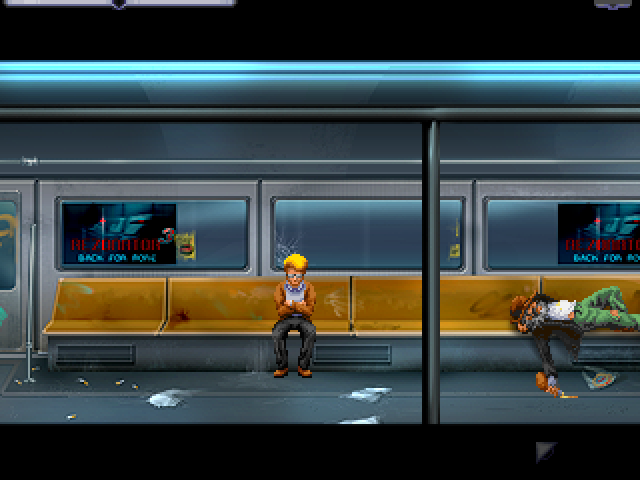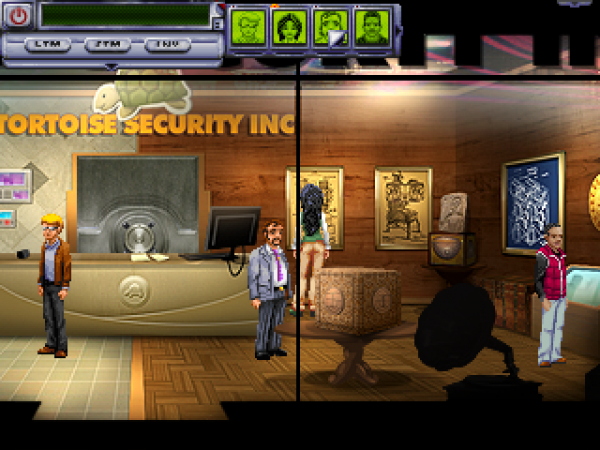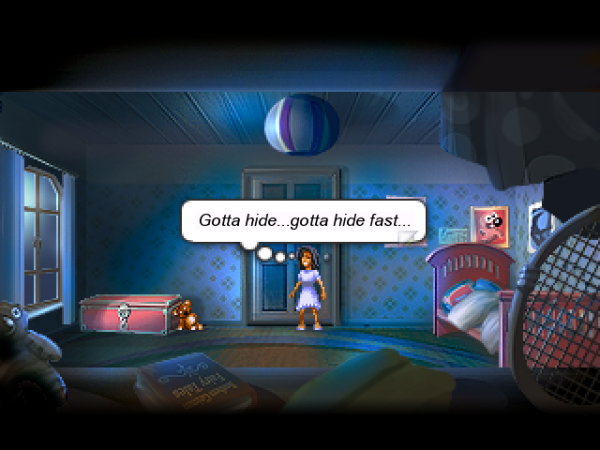There’s a certain inescapable, old-school appeal to point-and-click adventure games. It may be the nostalgia, or perhaps it’s the genre’s ability to tell an authored tale without giving the player very much opportunity to muck it up. Love or hate these games, they are undoubtedly of classic design and have been experiencing a resurgence, occasionally arriving with tweaks and improvements to make them more mechanically modern while still delivering narrative in the traditional, exploration- and dialog-driven manner.
Resonance, yet another new title from the very respectable Wadjet Eye Games (who gave us the Blackwell games and Gemini Rue), shakes up what players know about the divergence of dialog and inventory systems in adventure games, cleverly yet clumsily uniting the two in the midst of a sometimes-elegant, sometimes-tedious, multi-character sci-fi mystery. The game, for all its unique and adventurous design, stumbles over itself in ways that could easily have been avoided in order to deliver a more engaging and enjoyable experience.
The game’s plot – one centering around the potential benefits and dangers of emerging technology, and the power of information in the modern world – is strong and thoughtful, though never heavy-handed. During its exposition, and more so following its major twist, narrative intrigue makes Resonance a game players won’t want to put down. Between those points, however, inherent character, item, and… memory mis-manageability leaves its pace hampered and its intrigue diluted.
Resonance introduces a unique memory system that allows players to drag objects from the environment into a “short-term memory” (STM) inventory, and then use these talking points in future dialog sessions. While this does open up new options for dialog and give players more ways to explore, it also tends to make situations nebulous when working out solutions, especially because the game consistently allows only one way to solve a given problem and proceed through the story.
What if I neglected to drag a relevant item – which I remember in my own mind – into STM, but then find myself in a conversation that requires my character to recall that information? I may realize what’s necessary immediately, but the game requires my character (and I hope it’s the right character, because the same STM object might work for only one of the four) to walk back to its place in the game world and add it before making progress. These mission-critical tidbits could easily be added to future dialog options automatically upon first examination. If that seems like it would detract from the game’s challenge, they could be included in the game’s long-term memory (LTM), which automatically collects the most significant story events and shares them across all characters, making them readily accessible without the tedium of backtracking. The LTM is both innovative and practical.
The only other drawback to the game’s unconventional mechanics involves its multi-character design. Controlling multiple characters sometimes allows for brilliant puzzle-solving, but at other times feels like needless complication compared to the game’s more efficient single-character play. Because of the ease with which critical items can be split among inventories (and in Resonance‘s case, short-term memories), players can mentally misplace these things and hinder progress in situations that would be efficiently manageable with a unified inventory or memory. When the solutions to puzzles rely more on player memory than reasoning ability, those tasks carry less value and offer less validation to a player.
Like their inventories and STMs, the protagonists themselves are thinly characterized – they’re not written to be deep or psychologically complex. This leaves something to be desired, but also relieves the game of further convolution that could potentially throw more speed bumps down in front of players. All four of them, however, have been given strong performances by their respective actors, and each interacts intimately and believably with the rest, though somewhat predictably based on their archetypes.
At a certain point, Resonance asks players to consider the lesser of two evils. Although the game presents what seem to be monumental choices, the impact following those decisions feels somewhat minimal. Perhaps more important is the choice between these evils: Do I endure play mechanics that suffer from a kind of adolescent awkwardness, or do I never experience a novel adventure game that asks for a reasonably small time commitment and has something meaningful to say in its emotionally charged closing act? In the case of Resonance, I’d choose to work around its flaws and see it through to the end.





















